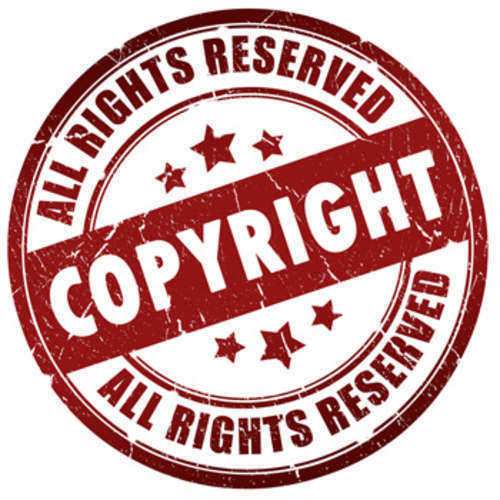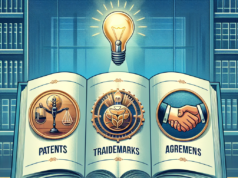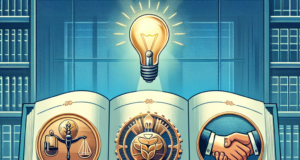
Introduction to Copyright
Copyright is a legal concept that grants creators exclusive rights over their original works that can be expressed in a variety of forms, such as books, music, paintings, and digital content. In the United States, copyright law is governed by the Copyright Act of 1976 and various amendments. However, copyright protection is not just a domestic issue; it is a global concern. In this article, we will explore the key differences between copyright law in the United States and international law.
Copyright Law in the United States
In the United States, copyright law is governed by the Copyright Act of 1976, which grants creators a set of exclusive rights over their original works of authorship. These rights include the right to reproduce, distribute, display, and perform the work publicly. The duration of copyright protection depends on the type of work, and the date of creation. For works created after January 1, 1978, copyright protection lasts for the life of the author plus 70 years after their death.
To obtain copyright protection in the United States, a creator does not need to register their work with the United States Copyright Office. However, registration provides additional benefits, such as the ability to sue for copyright infringement, statutory damages, and attorney fees in court. Copyright registration requires the submission of an application, payment of a fee, and a copy of the work to the United States Copyright Office. The registration process can take several months, but there are media-specific registries that streamline the process for certain types of creative works.
The United States is a member of several international treaties that govern copyright law, such as the Berne Convention for the Protection of Literary and Artistic Works and the WIPO Copyright Treaty. These treaties provide guidelines on the minimum standards for copyright protection, such as protection for fixed works of authorship and the minimum duration of copyright protection.
International Copyright Law
Copyright law varies by country, and international copyright law aims to harmonize these differences and create international standards and guidelines for copyright protection. The Berne Convention for the Protection of Literary and Artistic Works is the most significant international copyright treaty, with 179 countries as signatories. The treaty sets minimum standards for copyright protection and provides a framework for international cooperation on copyright issues.
Under the Berne Convention, copyright protection attaches automatically to a work of authorship as soon as it is created. Similarly to the United States, copyright protection lasts for the life of the author plus a fixed duration, which varies by country and work type. In the event of a copyright dispute, the country where the infringement took place will govern the case.
The World Intellectual Property Organization (WIPO) is the United Nations agency responsible for promoting and protecting intellectual property, including copyright, worldwide. In partnership with member states and other organizations, WIPO developed several treaties to address copyright protection and enforcement. The WIPO Copyright Treaty (WCT) and the WIPO Performances and Phonograms Treaty (WPPT) aim to provide updated international copyright standards and protection for digital and electronic works.
One of the significant differences between international copyright law and United States copyright law is the method of obtaining copyright protection. In the United States, copyright protection attaches automatically to a work upon creation; hence, registration is not necessary to obtain protection. However, in some countries, such as Canada, registration is necessary to obtain copyright protection.
Another significant difference between international copyright law and United States copyright law is the duration of protection. Under the Berne Convention, in most countries, the duration of copyright protection is the life of the author plus 50 years. However, in some countries, such as Mexico, the duration is the life of the author plus 100 years.
International copyright law also recognizes some exceptions to copyright protection, such as fair use in the United States. While the concept of fair use does exist in other countries, its scope and limitations vary, making it important to seek local legal advice when dealing with works in those countries.
Enforcing Copyright
In the United States, copyright owners have the ability to enforce their rights through civil lawsuits. In the event of a copyright infringement, the copyright owner can file a lawsuit, seeking monetary compensation and injunctions to stop the infringing activities. If the court determines that infringement occurred, the infringer can be held liable for damages, which can include actual damages and profits or statutory damages.
Under international copyright law, the enforcement of copyright is left to individual countries. However, most countries have created legal systems that provide protection and remedies for copyright owners. For example, Canada’s Copyright Act provides for statutory damages, injunctions, and criminal penalties for infringements.
Conclusion
Copyright law is a vital concern for creators and a global issue. In the United States and internationally, copyright laws aim to provide a framework for protecting original works of authorship. While there are differences between the United States copyright law and international copyright law, both recognize the importance of copyright protection and enforcement. Understanding the similarities and differences between the United States and international copyright law is essential for creators looking to protect their works both domestically and internationally. It is always advisable to seek legal advice when dealing with copyright issues, especially in international contexts.
A copyright is an exclusive set of rights awarded to an author or creator of an original work. A copyright symbol protects the individual from duplication and distribution efforts made by outside individuals or corporations. In addition to protecting against replication, a copyright also grants the original author the right to copy his or her work, the right to adapt the work, and the right to distribute the work for a profit. To balance between exclusive rights and exceptions for creativity and public interest, a copyright incorporates characteristics which initiate fair dealing and fair use laws.






















